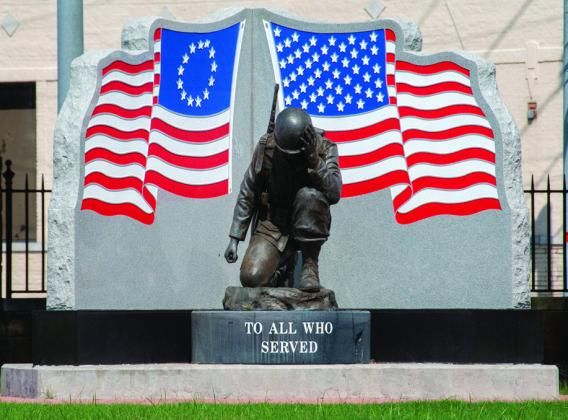Part I of II
World War I – known at the time as “The Great War” - officially ended when the Treaty of Versailles was signed on June 28, 1919. However, fighting ceased seven months earlier when an armistice or temporary cessation of hostilities, between the Allied nations and Germany went into effect on the eleventh hour of the eleventh day of the eleventh month. For that reason, November 11, 1918, is generally regarded as the end of World War I (WWI).
In November 1919, President Wilson proclaimed November 11th as the first commemoration of Armistice Day with the following words: “To us in America, the reflections of Armistice Day will be filled with solemn pride in the heroism of those who died in the country’s service and with gratitude for the victory, both because of the thing from which it has freed us and because of the opportunity it has given America to show her sympathy with peace and justice in the councils of the nations…” The original concept for the celebration was for a day observed with parades and public meetings and a brief suspension of business beginning at 11:00 a.m. The United States Congress officially recognized the end of WWI when it passed a concurrent resolution on June 4, 1926. On May 13, 1938, Congress made the 11th of November in each year a legal holiday— a day to be dedicated to the cause of world peace and to be thereafter celebrated and known as “Armistice Day.” So, at first, Armistice Day was primarily a day set aside to honor veterans of World War I.
However, in 1954, after World War II had required the greatest mobilization of soldiers, sailors, marines, and airmen in the nation’s history and after American forces had fought aggression in Korea, the 83rd Congress, at the urging of the veteran’s service organizations, amended the Act of 1938 by striking out the word “Armistice” and inserting in its place the word “Veterans.” With the approval of this legislation on June 1, 1954, November 11th became a day to honor American veterans of all wars.
The Uniform Holiday was signed on June 28, 1968, and was intended to ensure three-day weekends for Federal employees by celebrating four national holidays on Mondays: Washington's Birthday, Memorial Day, Veterans Day, and Columbus Day. It was thought that these extended weekends would encourage travel, recreational and cultural activities and stimulate greater industrial and commercial production. Many states did not agree with this decision and continued to celebrate the holidays on their original dates.
The first Veterans Day under the new law was observed with much confusion on October 25, 1971. It was quite apparent that the commemoration of this day was a matter of historic and patriotic significance to a great number of our citizens, and so on September 20, 1975, President Gerald R. Ford signed Public Law 94-97, which returned the annual observance of Veterans Day to its original date of November 11th, beginning in 1978. This action supported the desires of most state legislatures, all major veterans’ service organizations and the American people.

